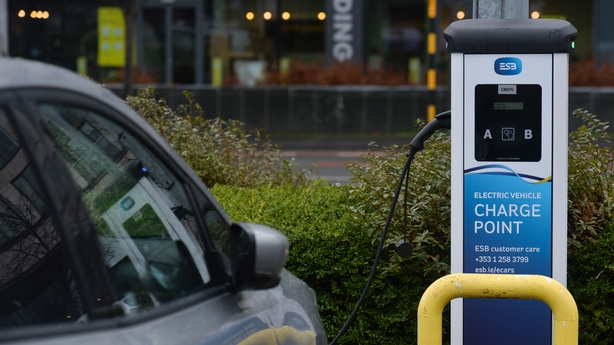Electric vehicle (EV) owners have been using their cars as a power source in their homes during power cuts caused by Storm Éowyn.
The vehicles store enough power to keep essential devices such as fridge freezers, central heating boilers, back boiler pumps or mobile phone and laptop chargers running for days.
Chairperson of the Irish EV Association Matthew Sealy said the most common solution is where people connect a cable to the charging socket on their car which feeds power from the vehicle to a three-pin plug socket board.
This "vehicle to load" arrangement allows people to power essential appliances.
Most electric car manufacturers supply the cables either as standard or as an optional accessory for the vehicles, and the vehicle software is set up to facilitate this.
Mr Sealy said there is no truth to the suggestion that using the car battery as a power source would affect the manufacturer warranty.
The manufacturers supply the hardware and software to allow the car to act as a power source and the slow trickle of power used by a few essential appliances would not adversely impact the battery's lifespan.
He said even a smaller car battery such as a 45 kWh battery on a Nissan Leaf can provide enough power for essential devices for two or three days before it has to be driven to a public charger if the home is still without power
Sustainability and circular economy consultant Roisin Markham, who lives in north Wexford, has been through a number of power cuts at her home over the last 12 months.
As they work from home her family have been able to use their Kia EV to keep their internet router and computers going and to keep their food frozen.
Another reason to drive an #electricvehicle. During a power cut, power your essential appliances, or indeed your whole house (with proper setup) from the #EV. You'll power the essentials for days with a 64kwh battery!#Ireland #StormEowyn #westcork pic.twitter.com/ctKJLsDADf
— Intothewild Ireland (@intothewild45) January 25, 2025
They lost power during Storm Éowyn for just nine hours but she said it was very reassuring to have the car as back up.
After the weather warnings were issued she made sure the car was fully charged on Thursday night and ready to supply essential power if needed.
She said an EV is a better solution than a generator and she would like to see more people informed about it as an option and grants given to people in rural areas if they need them to make their homes more resilient.
Irish EV Association chairperson Matthew Sealy agreed.
He has solar panels and a battery in his home but would not be able to use them for power if the grid goes down.
He would need a switch in his home to cut it off from the grid if he wants to use electricity from his solar panels or battery during a power cut.
This is necessary to protect ESB technicians working on the lines.
He looked at the option when he got his solar panels and battery installed but the switch would have added between €1,000 and €1,500 to the cost of installation.

The SEAI does give a grant towards the cost of solar panels for homes but a grant for batteries to store the solar energy was discontinued a few years ago.
There have been calls in the aftermath of Storm Éowyn for the government to give grants for people in rural areas to buy generators.
Matthew Sealy, however, believes the money would be better spent helping people to get solar panels, batteries and the switches needed to allow them to use that power when their mains connection is down.
Batteries in homes in rural areas would save people money when there is no storm because they can be charged on cheap night rates with the power used at peak times when electricity is most expensive.
They would also ease pressure on the grid during those peak demand times while they are also a more sustainable solution than generators run on petrol or diesel.
Asked about the difficulty of charging EVs when there are widespread power cuts, Mr Sealy said it can be a challenge but points out that if there is no electricity for the EV chargers at a service station there will also be none to run the petrol or diesel pumps at that station.







